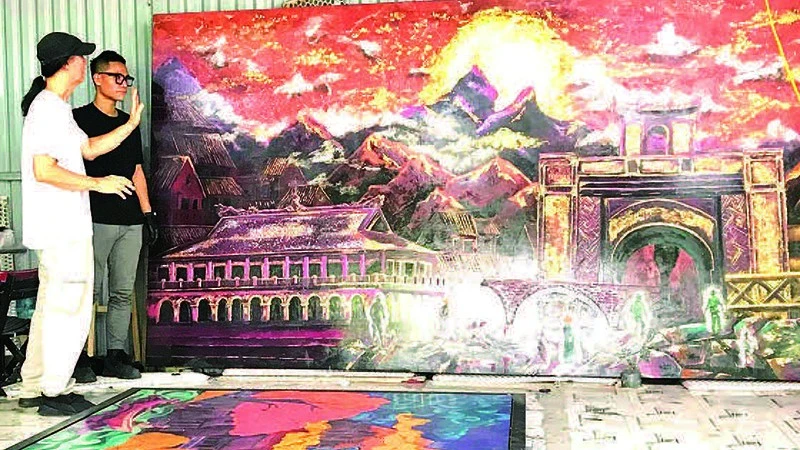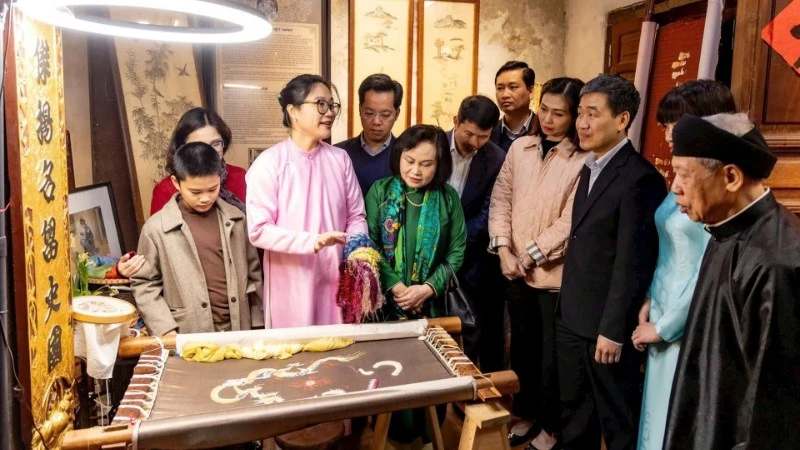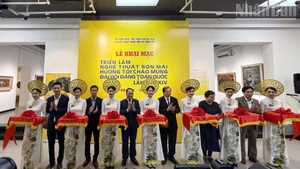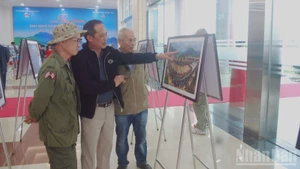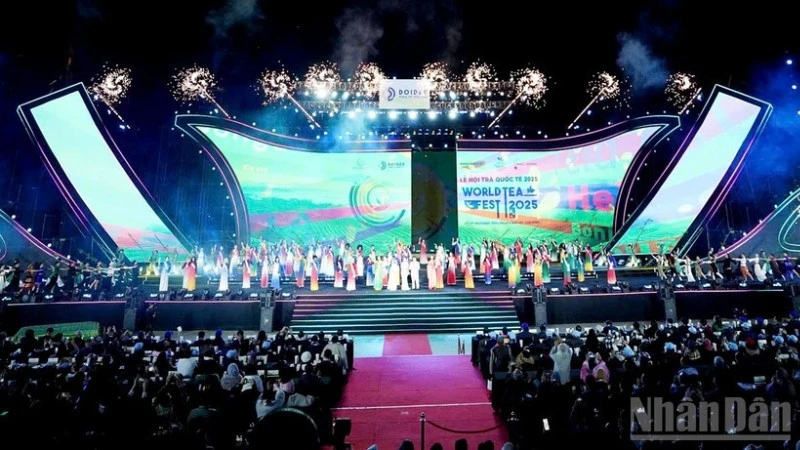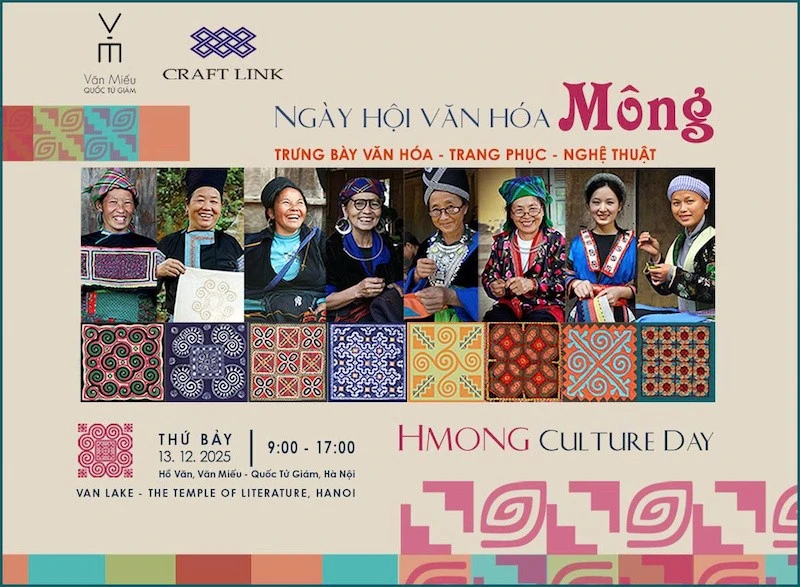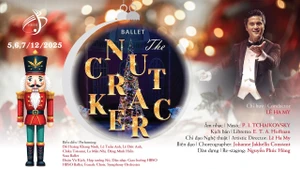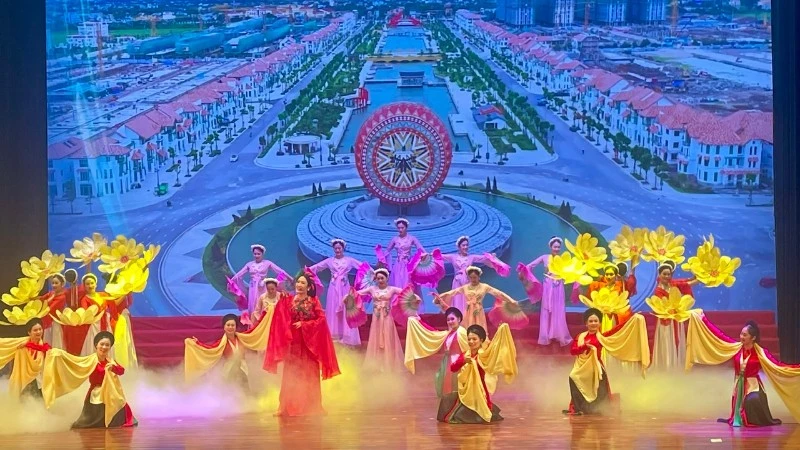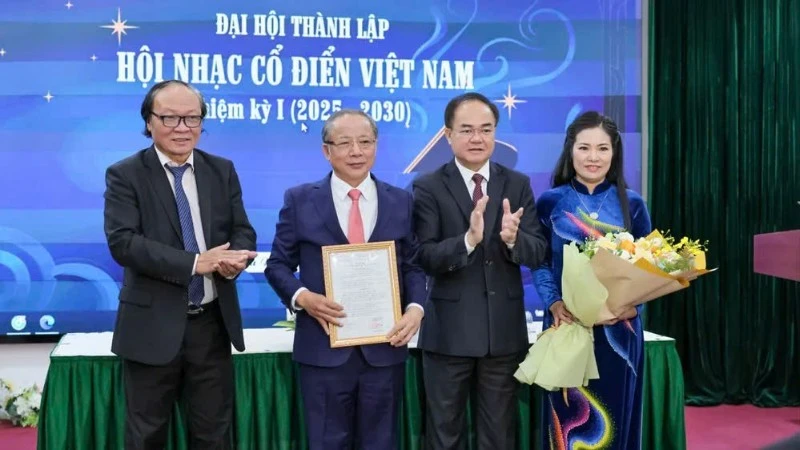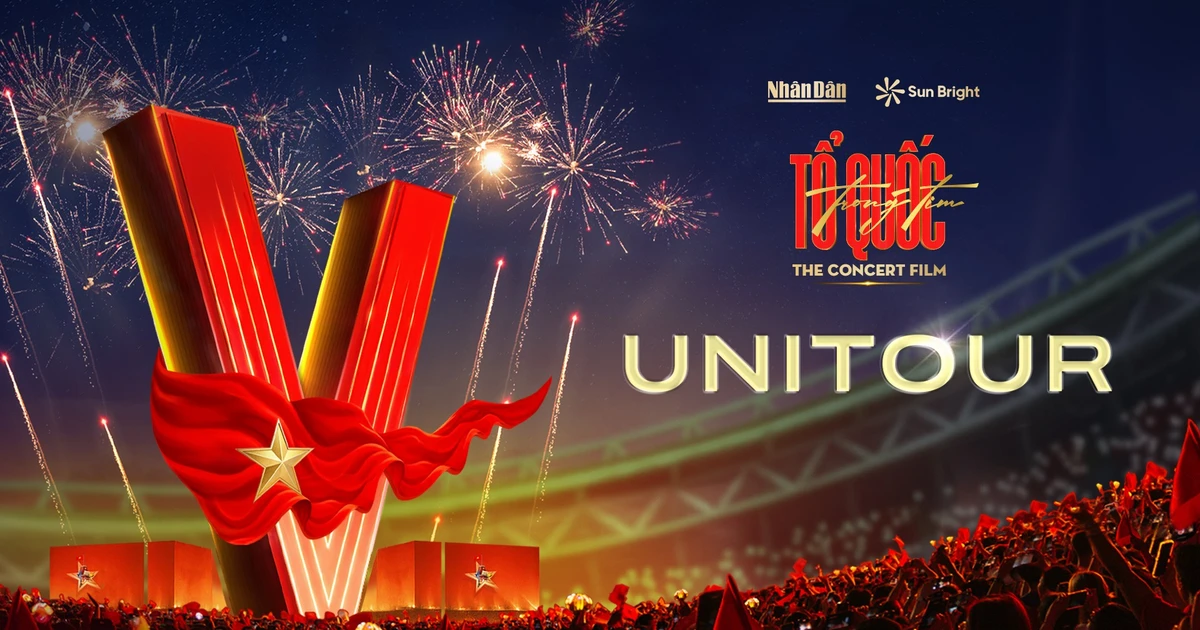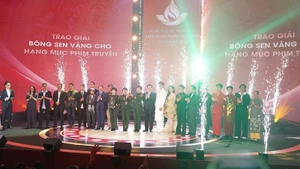Following his monumental 2024 exhibition “Dau thieng” (Sacred Traces) at the Thang Long Imperial Citadel, 9x-generation artist Chu Nhat Quang is now preparing to unveil 20 large-scale lacquer works in a new showcase titled “Mua xuan doc lap” (Spring of Independence), commemorating the 80th anniversary of the August Revolution (August 19) and Viet Nam’s National Day (September 2).
Creation rooted in tradition
For several months, each day for young artist Chu Nhat Quang at the “Spring of Independence” lacquer painting workshop in Y La area, Duong Noi (Ha Noi), has begun with early morning meetings with collaborators to discuss and plan work, followed by long hours of working stretching late into the night.
Despite having studied art abroad for seven years and absorbing Western artistic philosophies, Chu Nhat Quang chose to pursue Viet Nam’s traditional lacquer painting.
His passion was nurtured from childhood in a cramped apartment tucked away in a narrow alley in Ha Noi, where his grandfather, People’s Artist Chu Manh Chan, and his father, Meritorious Artist Chu Luong, who are both renowned for lacquer paintings of rural life and water puppetry, taught him the fundamental techniques of the craft and instilled in him a deep love and reverence for Viet Nam’s cultural values and the historical lessons embedded in each heritage piece.
The 9x painter still remembers a parting remark from an Australian lecturer before he returned home: “We have equipped you with critical thinking, knowledge, technology, and modern art trends. Now go forth with your love and aspirations—you will find success on the artistic path enriched by your national identity.”
Though just over five years have passed since his return to Viet Nam, Quang has already made a strong mark on the country’s art scene.
Building on traditional techniques of preparing lacquer surfaces and developing colour, he has carved out a new path, elevating Vietnamese lacquer art through relentless innovation in visual expression. Chu Nhat Quang has pushed past the limitations of conventional lacquer work, introducing a broader palette and new modes of expression.
He has also boldly experimented with creating large-scale lacquer panels on seamless, recycled materials, unlike the traditionally spliced wooden boards, ushering in a new hallmark of his artistic identity. Today, his monumental single-panel lacquer works have become a signature in Viet Nam’s fine arts circles.
A journey through historic events
Following “Sacred Traces”, the fine art community eagerly awaits Chu Nhat Quang’s upcoming “Spring of Independence” exhibition, featuring 20 large-scale lacquer paintings, of which some reach nearly 20 square metres in size.
Scheduled to open at the Ho Chi Minh Museum (Ha Noi) in mid-August, the exhibition commemorates the 80th anniversary of the August Revolution (August 19) and National Day (September 2).
The “Spring of Independence” space resembles a visual journey through significant historical events. Architectural elements characteristic of various regions are harmoniously interwoven with vivid portrayals of people and key historical landmarks, highlighting national unity and cultural identity.
Among the featured scenes are Ba Dinh Square, President Ho Chi Minh Mausoleum, the Lung Cu Flag Tower at the northernmost point of Viet Nam, the legendary Truong Son Trail, the once-fierce Quang Tri Citadel, and Nha Rong Wharf where Ho Chi Minh set out to find a way to save the nation, as well as the Truong Sa (Spratly) and Hoang Sa (Paracel) archipelagos, and the Independence Palace—the final rendezvous point on the day of the historic 1975 Spring Victory.
The highlight of the exhibition is a pair of double-sided lacquer paintings entitled “President Ho Chi Minh Declares Independence”, measuring nearly 8 metres long and 3 metres wide, and “North-South Reunification” which is 5 metres long and 4 metres wide. Each painting weighs 2 to 3 tonnes and features imagery on both sides around a unified theme.
Depicting Viet Nam’s beloved leader—an extraordinary figure and cultural icon for both the nation and humanity, these works portray President Ho Chi Minh with intellectual depth, compassion, and the affection he both gave to and received from the Vietnamese people and international friends.
Complementing these works is a series titled “Ho Chi Minh’s Journey”, chronicling his path from Nha Rong Wharf to Pac Bo, where he returned to directly lead the revolutionary movement for national liberation and independence.
The most notable is a lacquer portrait of Nguyen Ai Quoc (President Ho Chi Minh) in 1920 during his vibrant revolutionary activities in Paris. The painting captures a pivotal moment when he embraced Marxism-Leninism, with the image of a wide-open horizon symbolising a liberated future for the Vietnamese people.
According to Meritorious Artist Chu Luong: “What is admirable and unique is how Quang interprets history through the eyes and understanding of today’s youth. I am truly glad that the younger generation is learning to appreciate and think about history in the right way. They are beginning to carry forward our mission—the responsibility of the artist to the nation and its people”.
